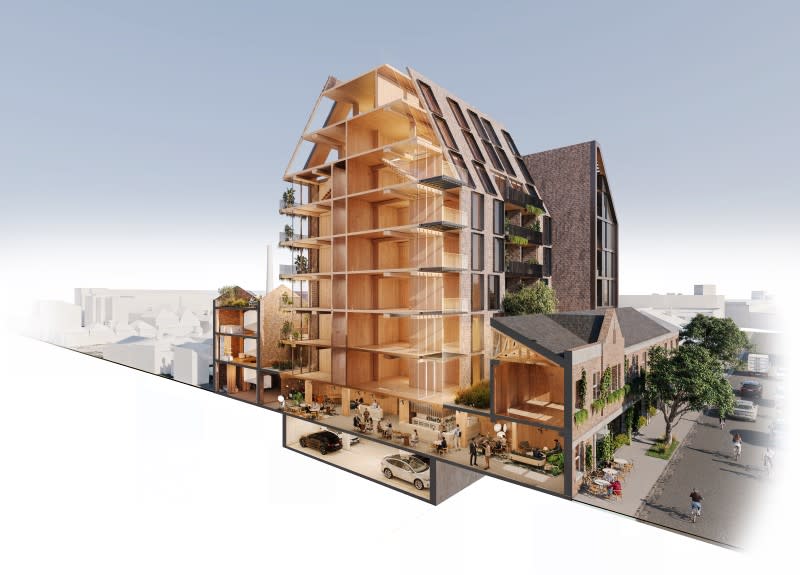Resources
Newsletter
Stay up to date and with the latest news, projects, deals and features.
Subscribe
Built-to-rent developer MODEL has revealed a second project in Melbourne’s Abbotsford that will incorporate passivhaus principles as it unveils a new fund in the space.
Its $250-million Regenerative Decarbonisation Fund [RDF] means investors can invest in passivhaus and sustainable projects, according to MODEL chief executive Rory Hunter.
“The RDF offers a pathway to align investment portfolios with broader climate goals and the changing regulatory environment,” Hunter said.
“Our projects will provide transparency in metrics, appealing to investors seeking higher returns alongside higher impact.
“And they offer a further competitive edge by also aligning with consumer expectations around sustainable housing.”
The Abbotsford project will combine passivhaus principles and design with adaptive reuse, creating 180 passivhaus-certified build-to-rent apartments within the former Schweppes Cordial factory.
Ten per cent of the apartments will be set aside for affordable housing.
Set on Lithgow Street and built in 1886, the factory’s facade will be retained. Under the plans a nine-storey extension will be built behind it with 14,000sq m of gross floor area.
The development cost for the project is estimated at $110 million.
Architects Warren and Mahoney has designed the plans, proposing mass timber to cut embodied carbon by 50 per cent.
Director of JLL Development Site Services Jesse Radisich brokered the deal and Baker McKenzie’s Dora Stilianos provided legal advice.

Investment bank Grant Samuel has been brought on as equity advisors with PwC as debt advisors.
MODEL’s first project was a 17-storey mass timber build-to-rent tower at Johnston Street. It will be Melbourne’s tallest residential timber building.
Both projects are aiming for a 6-Star Green Star rating, a 9-star NatHERS rating and net-zero emissions with the Australian Passivhaus Association keen on the project.
Grant Samuel chief executive Damien Elias said creating a fund was a good direction for MODEL.
“There are significant long-term tailwinds in inner-city densification driven by net population growth and an urgent need to address the housing supply crisis,” Elias said.
“What makes MODEL so compelling is how it weaves the thematic of decarbonisation into its developments, offering investors not only a solution to these pressing challenges but also a future-proofed, sustainable asset that aligns with the increasing demand for greener portfolios.”
Arup, TTW, Urbis, Neuron and Slattery have also been engaged to help deliver the project.